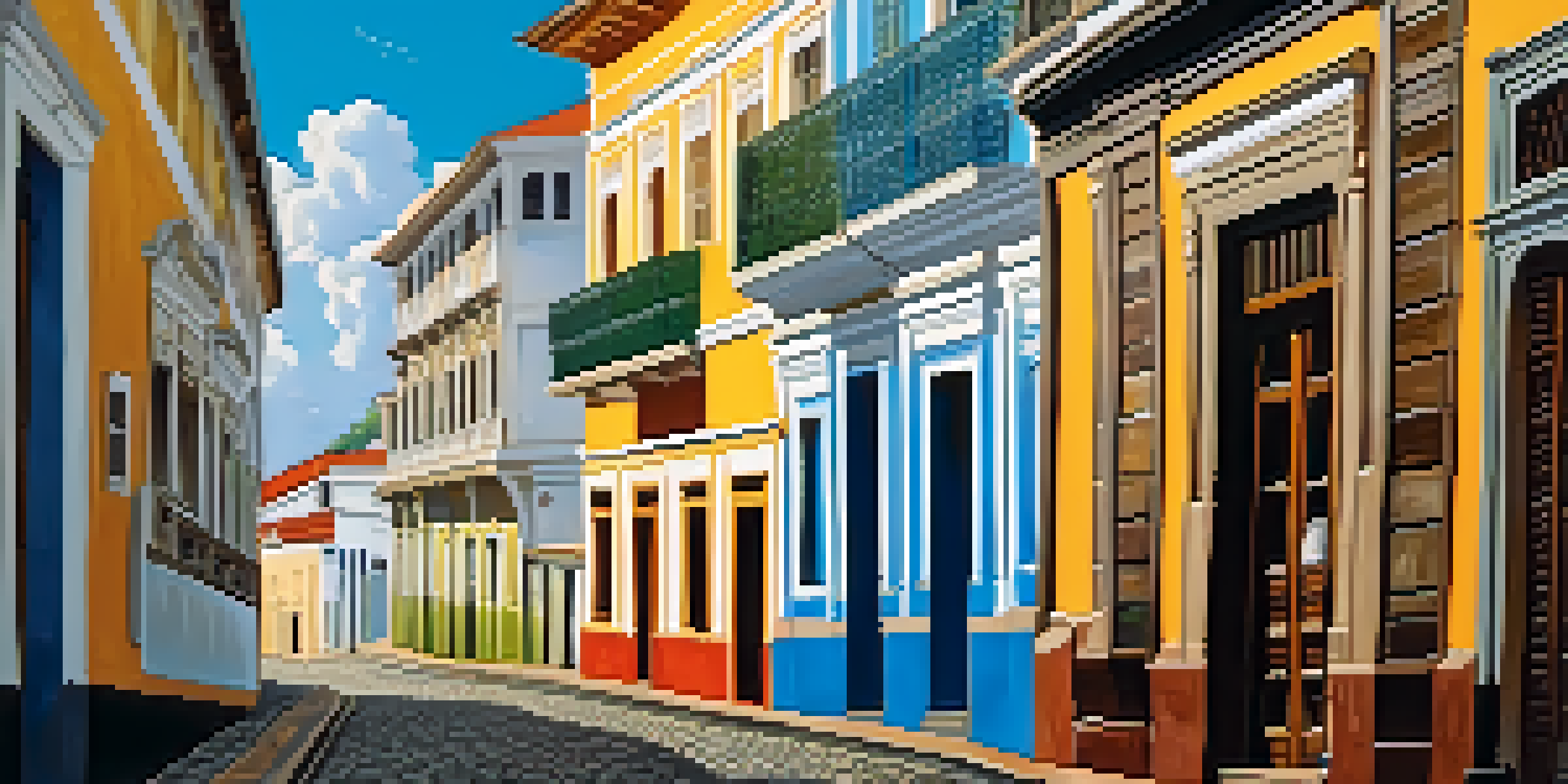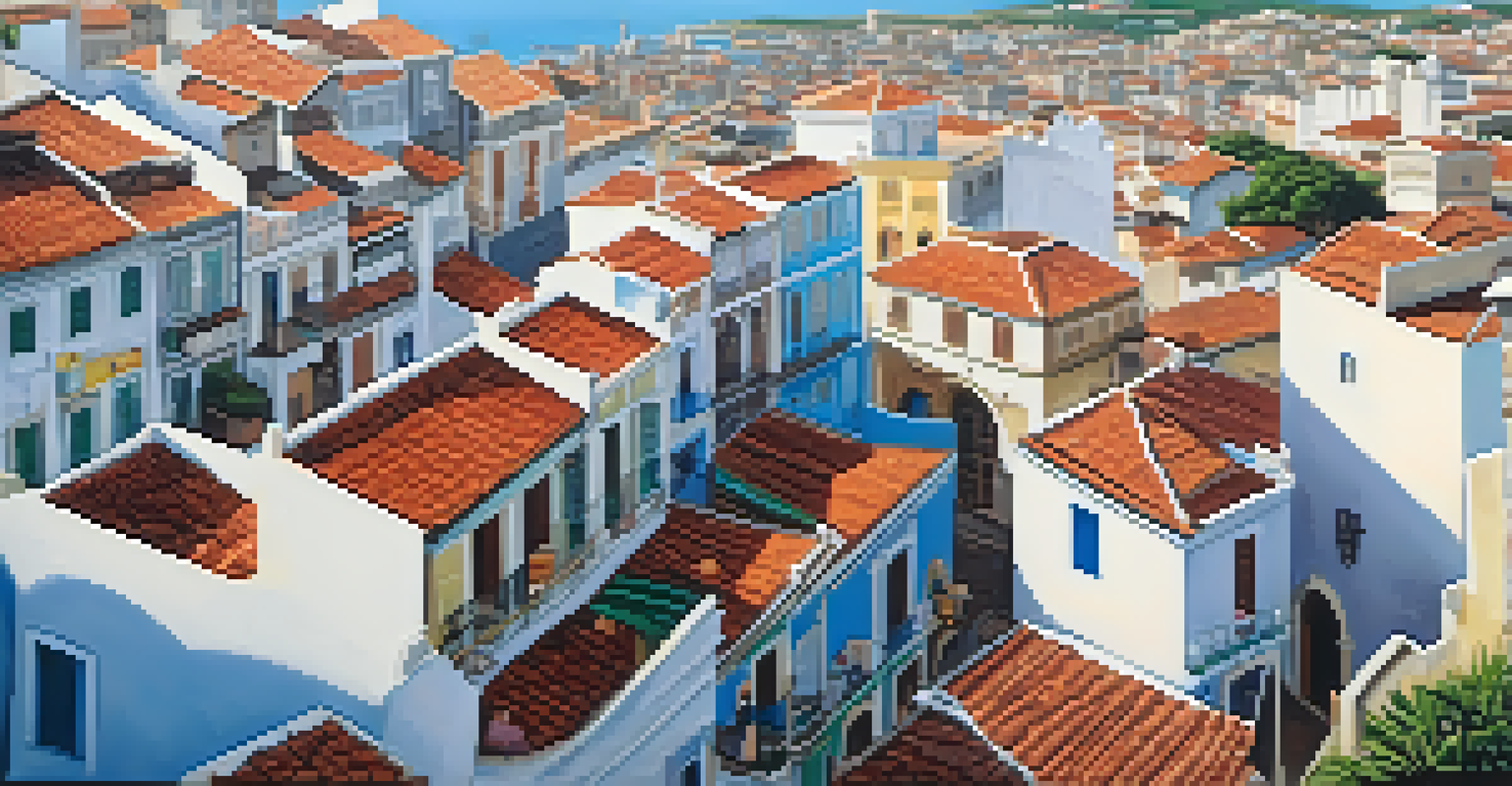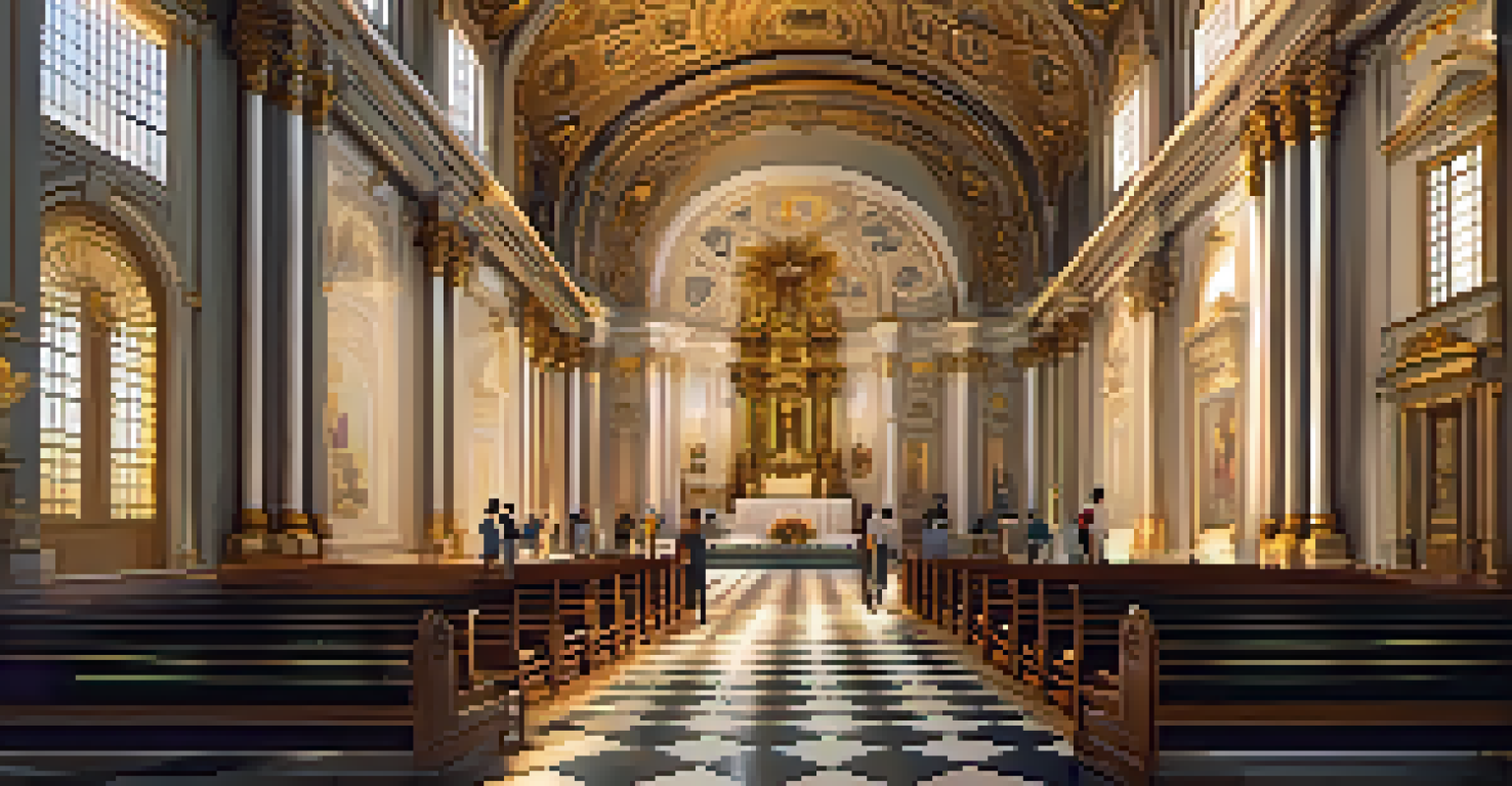Cultural Landmarks of Salvador: A Tour of Artistic Heritage

Introduction to Salvador's Artistic Heritage
Salvador, the capital of Bahia, is a treasure trove of cultural landmarks reflecting its rich artistic heritage. Known for its vibrant Afro-Brazilian culture, the city boasts a blend of indigenous, African, and Portuguese influences. With its colorful streets and historic architecture, Salvador invites visitors to explore its unique artistic landscape.
The essence of Salvador is not just in its sights but in its stories, woven through every street and landmark.
The city's cultural landmarks are not just sites to visit; they are stories waiting to be told. From the rhythmic beats of samba to the intricate designs of colonial buildings, every corner of Salvador speaks to its diverse history. This article will guide you through some of the most significant landmarks that embody the artistic spirit of this enchanting city.
As we embark on this journey through Salvador's cultural landmarks, prepare to be captivated by the rich traditions and artistic expressions that define the city. Each site we explore will unveil layers of history and creativity, shedding light on why Salvador is often hailed as the cultural heart of Brazil.
Pelourinho: The Heart of Salvador's Culture
Pelourinho is the historic center of Salvador and a UNESCO World Heritage site, known for its stunning colonial architecture. Walking through its cobblestone streets, you'll encounter colorful buildings adorned with intricate baroque details, making it a visual feast for the eyes. This area is not only a feast for the senses but also a vibrant hub for cultural activities.

Street performances, local artisans, and lively markets fill the air with an infectious energy that captures the essence of Salvador. Here, you can experience traditional Bahian music and dance, with capoeira circles often forming spontaneously in the squares. Pelourinho serves as a living museum, where visitors can immerse themselves in the city's artistic expressions.
Salvador's Rich Cultural Heritage
Salvador is a vibrant city that showcases a unique blend of indigenous, African, and Portuguese influences through its artistic landmarks.
Don't miss the chance to visit iconic landmarks such as the Church of São Francisco, famous for its dazzling gold interior. This baroque masterpiece exemplifies the religious and artistic fusion that characterizes Salvador. Pelourinho is truly a must-visit for anyone eager to understand Salvador's rich cultural tapestry.
The Elevador Lacerda: A Symbol of Connection
The Elevador Lacerda, a remarkable public elevator, stands as a symbol of connection between the lower city and the upper city of Salvador. Completed in 1873, this engineering marvel not only offers stunning views of the Baía de Todos os Santos but also serves as a vital transportation link for locals and visitors alike. This landmark reflects the innovative spirit and architectural prowess of its time.
Art is the most beautiful of all lies; it reveals truths that are often overlooked in everyday life.
Riding the elevator is more than just a practical experience; it's a journey through history. As you ascend, you'll see the contrast between the bustling market scenes below and the elegant colonial buildings above. The Elevador Lacerda embodies Salvador's unique blend of functionality and beauty, making it a fascinating subject for exploration.
At the top, you'll find the Praça Tomé de Souza, where you can take in panoramic views and enjoy the vibrant atmosphere. Nearby, various cultural attractions await, including art galleries and museums. The Elevador Lacerda not only connects two worlds but also enriches the cultural experience of anyone who visits Salvador.
São Francisco Church: A Baroque Masterpiece
The Church of São Francisco is a stunning example of baroque architecture that showcases the artistic heritage of Salvador. Known for its opulent interiors covered in gold leaf, this church is often regarded as one of the most beautiful in Brazil. As you step inside, the intricate carvings and elaborate decorations create an atmosphere of awe and reverence.
Built in the 18th century, the church reflects the wealth and power of the Catholic Church during that era. Its design incorporates elements of both Portuguese and African influences, symbolizing the cultural fusion that characterizes Salvador. The church is not just a place of worship; it's a testament to the artistic mastery of its creators.
Pelourinho: Cultural Hub of Salvador
Pelourinho serves as the historic heart of Salvador, featuring stunning colonial architecture, lively street performances, and a vibrant arts scene.
Visitors can also explore the adjacent Convent of São Francisco, which houses a museum displaying religious artifacts and artworks. The tranquil gardens provide a peaceful escape from the bustling city, inviting reflection and appreciation of Salvador's rich spiritual heritage. The Church of São Francisco is a must-see for anyone interested in the artistic and cultural dimensions of Salvador.
The Mercado Modelo: A Cultural Shopping Experience
The Mercado Modelo is a bustling market that showcases the vibrant culture and craftsmanship of Salvador. Located near the Elevador Lacerda, this market is a paradise for those looking to take home a piece of Bahian artistry. From handmade jewelry to colorful textiles, the variety of local products reflects the creativity of Salvador's artisans.
Visiting the Mercado Modelo is more than just shopping; it's an immersive cultural experience. As you stroll through the stalls, you'll encounter friendly vendors eager to share their stories and the inspiration behind their creations. The lively atmosphere, filled with the sounds of traditional music, adds to the charm of this market.
Don't forget to sample local delicacies while you're there, such as acarajé or cocada, which give you a taste of Salvador's culinary heritage. Whether you're searching for unique souvenirs or simply want to soak in the local culture, the Mercado Modelo is a vibrant hub that captures the essence of Salvador's artistic spirit.
Museu de Arte da Bahia: A Window into Brazilian Art
The Museu de Arte da Bahia is a cultural gem that offers a comprehensive overview of Brazilian art from the 17th century to the present. Housed in a beautiful colonial building, the museum features an impressive collection of paintings, sculptures, and decorative arts that reflect the diverse influences shaping Brazilian culture. This is the perfect place to dive deeper into the artistic heritage of Salvador.
Among the highlights are works by renowned artists such as Cândido Portinari and Tarsila do Amaral, showcasing the evolution of Brazilian art over the decades. The museum not only highlights local talent but also incorporates international pieces, providing a well-rounded perspective on artistic trends. This blend of local and global influences makes it a rich educational experience.
Art and Spirituality at Bonfim Church
The Church of Bonfim exemplifies the intersection of faith and culture in Salvador, drawing visitors with its beautiful architecture and rich traditions.
The museum also hosts temporary exhibitions and cultural events, making it an active participant in Salvador's artistic dialogue. Whether you're an art enthusiast or a casual visitor, the Museu de Arte da Bahia is an essential stop to appreciate the creativity that flourishes in Salvador and beyond.
The Bonfim Church: A Blend of Faith and Culture
The Church of Bonfim, with its striking blue and white facade, is one of Salvador's most significant religious landmarks. This church is a pilgrimage site for many, particularly during the famous Festa do Bonfim, where devotees tie colorful ribbons to its gates as a symbol of their prayers. This blend of faith and culture makes it a fascinating place to visit.
Inside, the church is adorned with numerous ex-votos, or offerings, showcasing the deep connection between the people of Salvador and their faith. This tradition highlights the cultural significance of the church, where art and spirituality intertwine. The atmosphere is filled with a sense of devotion and community, making it a profound experience.

Visitors can also enjoy the picturesque views from the church grounds, overlooking the bay and the vibrant city below. The Church of Bonfim encapsulates the essence of Salvador, where art, culture, and spirituality come together in a harmonious celebration of life. It's a place that leaves a lasting impression on all who visit.
Conclusion: Embracing Salvador's Artistic Legacy
As we conclude our tour of Salvador's cultural landmarks, it's clear that the city's artistic heritage is rich and diverse. Each landmark tells a unique story, representing the historical and cultural influences that have shaped Salvador over the centuries. From the vibrant streets of Pelourinho to the serene grounds of the Church of Bonfim, the city's artistic spirit is palpable.
Visiting these landmarks provides a deeper understanding of Salvador's identity and its place within Brazil's cultural landscape. The fusion of art, faith, and community creates a vibrant atmosphere that captivates both locals and visitors alike. Salvador is not just a destination; it's an experience that resonates with the soul.
So, whether you're planning a trip or simply looking to learn more about Salvador, remember that its cultural landmarks are gateways to understanding the city's artistic legacy. Embrace the stories, the creativity, and the spirit of Salvador, and you'll leave with memories that will last a lifetime.